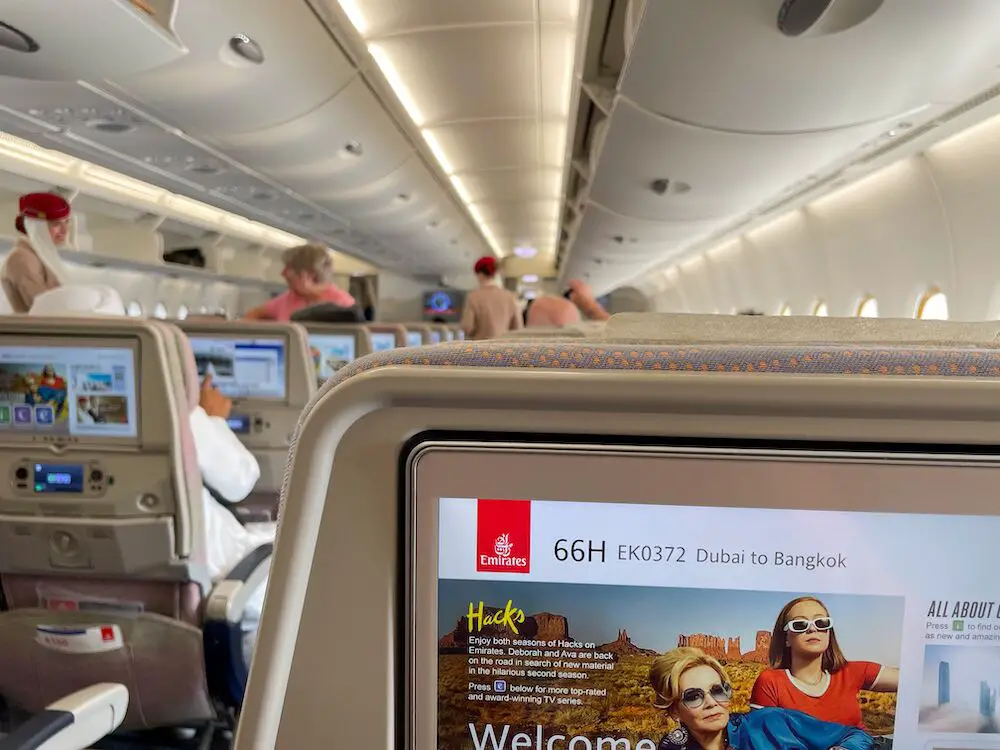Airline partnerships are agreements between airlines that allow them to collaborate on various aspects of their operations, with the primary goal of providing better services to their passengers. These partnerships come in various types, each with its own benefits.
If you are an air traveler, especially a frequent traveler or a business traveler, you will want to read on to learn more about these partnerships and how they can benefit you.
Did you miss a connecting flight? File a compensation claim online.

1. A Guide to Airline Partnerships: Types and Benefits for Travelers
There are three primary types of partnerships among airlines.
And each type has its own set of benefits and drawbacks.
1.1 Interline Agreement
What is an interline agreement?
An interline airline partnership or agreement refers to a business arrangement between two or more airlines, enabling them to manage passengers and baggage on routes that require the involvement of multiple airlines. Essentially, it allows passengers to check their baggage at the departure airport and have it seamlessly handled by the relevant airlines until their final destination.
This agreement permits each airline to accept tickets from the other and includes provisions for baggage transfers and liability. Additionally, it enables airlines to sell tickets and services from partner carriers to passengers traveling on itineraries involving multiple airlines, eliminating the need for check-in procedures or baggage handling during stopovers.
Interline partnerships are the most basic form of airline partnerships, and they are commonly employed across the industry. Numerous airlines have established interline agreements to enhance the efficiency of their services.
There are several drawbacks of interline agreements. Unfortunately, passengers can’t collect frequent flyer miles for the entire journey. For instance, if a booking is made for a connecting flight (of two flight legs) operated by two airlines, miles and points may only be earned on one of the flights. Moreover, there may be inconsistencies in baggage allowances for carry-on bags and checked baggage.
1.2 Codeshare Partnership
What are codeshare flights and partnerships?
A codeshare partnership represents a step up from interlining and involves airlines collaborating by selling seats on each other’s flights using their own airline codes. This means that passengers can book a flight with one airline but actually travel on a plane operated by the partner airline.
The benefit for passengers is that they have more options in terms of routes and flight schedules. As for benefits of code sharing for airlines, this partnership allows them to expand their destination offerings without the need to operate flights to those locations.
Code shares can be beneficial to frequent fliers as they can earn miles and points on code shares operated by another carrier, in addition to their regular mileage programs.
If you have a connecting flight with different airlines, and there’s a codeshare agreement between these airlines, you won’t need to recheck your baggage or check in for your next flight at your layover airport. Your bag will be sent to your final destination, and you will get all the boarding passes upon checking in at your origin airport.
Read more: What is a Codeshare Flight? A Comprehensive Guide for Travelers
1.3 Alliance Partnership
Alliance partnerships occur when multiple airlines collaborate to offer a seamless travel experience for passengers.
The three major airline alliances are Star Alliance, Oneworld, and SkyTeam. Members of these alliances typically offer reciprocal benefits for frequent flyers, access to airport lounges, and coordinated flight schedules.
Passengers benefit from earning and redeeming miles across multiple airlines and gaining access to a wider range of destinations. For partner airlines, alliances allow them to offer an appealing loyalty program and compete more effectively with other airlines and alliances.

2. Interline Agreement vs Codeshare Partnership
Although the descriptions for codeshare and interline partnerships may appear similar, they are actually quite different.
Codeshare agreements involve the use of an airline’s code for a flight operated by another airline, while interlining agreements refer to the ability to issue a single ticket for a journey involving multiple airlines.
Interline agreements can be one-directional, which means a ticket can be issued by one airline on a different airline’s itinerary, but not the other way around. This is known as a unilateral interline agreement. Alternatively, airlines can form a bilateral interline agreement, which allows each airline to issue tickets on the other airline’s itinerary.
With interline agreements, flight timings and schedules are not coordinated, which means there may be limited connectivity. Codeshare partnership, on the other hand, have coordinated flight schedules, enabling smoother connections.
Codeshare partnerships provide passengers with shared services, including lounge access and priority handling. Passengers also have the opportunity to earn miles and points on codeshare flights.
To clarify, airlines can have interline agreements without being codeshare or alliance partners. Even competing airlines may have such agreements. In fact, codeshares typically require interline agreements, and alliance members must have interline agreements with each other for practical reasons.
Just to clarify, the interline agreement allows codeshare flights to offer support in case of missed connections and allows for checked baggage to be transferred between airlines.
3. Benefits of Airline Partnerships
Airline partnerships offer several benefits to both airlines and passengers.
Here are some key advantages of airline partnerships.
3.1 Convenience of Booking a Single Ticket
One of the most significant benefits of airline partnerships is that you can book a single itinerary that includes flights from multiple carriers. For instance, if you are flying from New York to Paris, you could book a ticket that includes the first leg with Delta Airlines and the second leg with Air France.
Despite the fact that these are operated by different airlines, they are considered one itinerary, and you only need to pay for one booking instead of searching and paying for individual flights.
3.2 Easy Check In Procedure and Baggage Transfer
If you have a single ticket that includes interline partner or codeshare flights, you only need to check in once.
When it comes to baggage transfer, your bag will also be sent to your final destination.
3.3 Miles, Points and Lounges
Another benefit of airline partnerships and alliances is that it allows airlines to pool their resources, such as frequent flyer miles and lounges. As a passenger, you could benefit from these shared resources by earning miles on one airline and redeeming them on another airline within the alliance.
You could also have access to more lounges, which can be especially useful if you have long layovers or delays.
3.4 Expanding Networks
Codeshare and interline agreements offer several benefits to airlines, too.
One of these benefits is the ability to expand their networks and reach more destinations without additional costs or resources. They also allow airlines to offer more frequent flights and wider access to flight options by combining different carriers’ flights into one ticket.
Also code shares and interline agreements can improve airline visibility on search engines, particularly for multi-carrier tickets.
3.5 Sharing of Costs and Risks
Airline agreements also facilitate the sharing of costs and risks between airline partners and can increase revenue through the sale of partner airline tickets.
Airlines can join forces to pool their resources and share operational costs, such as airport facilities, ground handling services, and maintenance. By doing so, they can achieve economies of scale and reduce individual expenses. This shared cost approach helps airlines optimize their operational efficiency and lower their overall expenses.
4. Benefits of Airline Alliances
Airline alliances benefit both airlines and passengers in various ways.
The benefits are similar to those of codeshare and interline agreements.
Alliance members can expand their network and improve connectivity by coordinating flight schedules and sharing airport facilities. Frequent flyer programs are often shared across the alliance, offering more reward options to travelers.
Alliance airlines may align their service standards, product offerings, and operational processes to provide passengers with a consistent experience. This includes baggage policies, onboard service, and customer service standards, improving overall reliability and quality across the alliance.
Airline alliances allow for cost savings. Members can collaborate on purchasing, maintenance, and shared resources to improve operational efficiency and reduce costs. These savings can be passed on to customers through competitive pricing.
Global brand recognition is enhanced with the reputable alliance partnership. Passengers often have confidence in booking with alliance airlines, knowing they are part of a reputable and reliable network of carriers.
Do you have more questions about airline partnerships or airline alliances? Ask in the comments below.
About the author:
Una is an organized globetrotter and foodie who’s been living a digital nomad lifestyle since 2013. She always starts her day early with a good book before diving into work. Apart from traveling and aviation, her other passions include gym, hiking and cycling. Una is also a strong proponent of AI technology. She firmly believes in its potential to simplify life and has often advocated for its wider adoption in our day-to-day activities. Her favorite airlines are Qatar Airways, Emirates, and KLM.
